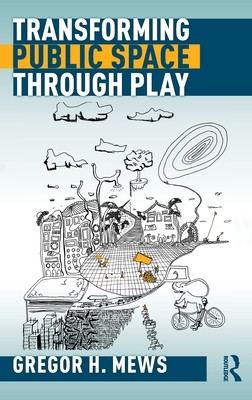
- Mēs nosūtīsim 10-14 darba dienu laikā.
- Autors: Gregor H Mews
- Izdevējs Routledge
- Gads: 2022
- Lapas: 244
- ISBN-10 : 0367680084
- ISBN-13 : 9780367680084
- Formāts: 15.6 x 23.4 x 1.6 cm, kieti viršeliai
- Valoda: Anglų
- Extra -10% atlaide, ievadot kodu: EXTRA
Atsauksmes
Apraksts
This book provides an empirical analysis of the concept of play as a form of spatial practice in urban public spaces. The introduced City-Play-Framework (CPF) is a practical urban analysis tool that allows urban designers, landscape architects and researchers to develop a shared awareness when opening up this window of possibility for adventure.
Two case studies substantiate and illustrate the development process and testing of the framework in Canberra, Australia, and Potsdam, Germany. The appropriation of public spaces that transcend boundaries can facilitate an intrinsic connection between people and their immediate environment, towards a more joyful ontological state of human existence in which imagination, co-creation and a sense of agency are key elements of the design approach. The framework presents an alternative understanding of public spaces and public life, reflecting on theory and its implications for practice in a post-pandemic world in dense urban centres.
A bridge between theory and practice, this book explores possibilities on what future design ought to be when openness and ambiguity are consciously integrated parts of practice and process. The book presents a valuable discussion on public space and play for academic audiences across a wide range of disciplines such as landscape architecture, urban design, planning, architecture and urban sociology, which is informative for future practice.
10 EXTRA % atlaide
Kupona kods: EXTRA
Akcija beidzas 7d.09:48:27
Atlaides kods derīgs pirkumiem no 10 €. Atlaides nav kumulatīvas.
Derīgs tikai pirkumiem tiešsaistē.

- Autors: Gregor H Mews
- Izdevējs Routledge
- Gads: 2022
- Lapas: 244
- ISBN-10: 0367680084
- ISBN-13: 9780367680084
- Formāts 15.6 x 23.4 x 1.6 cm, kieti viršeliai
- Valoda: Anglų
This book provides an empirical analysis of the concept of play as a form of spatial practice in urban public spaces. The introduced City-Play-Framework (CPF) is a practical urban analysis tool that allows urban designers, landscape architects and researchers to develop a shared awareness when opening up this window of possibility for adventure.
Two case studies substantiate and illustrate the development process and testing of the framework in Canberra, Australia, and Potsdam, Germany. The appropriation of public spaces that transcend boundaries can facilitate an intrinsic connection between people and their immediate environment, towards a more joyful ontological state of human existence in which imagination, co-creation and a sense of agency are key elements of the design approach. The framework presents an alternative understanding of public spaces and public life, reflecting on theory and its implications for practice in a post-pandemic world in dense urban centres.
A bridge between theory and practice, this book explores possibilities on what future design ought to be when openness and ambiguity are consciously integrated parts of practice and process. The book presents a valuable discussion on public space and play for academic audiences across a wide range of disciplines such as landscape architecture, urban design, planning, architecture and urban sociology, which is informative for future practice.

Atsauksmes